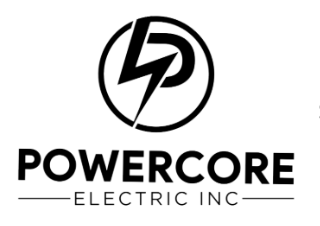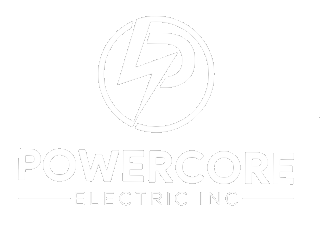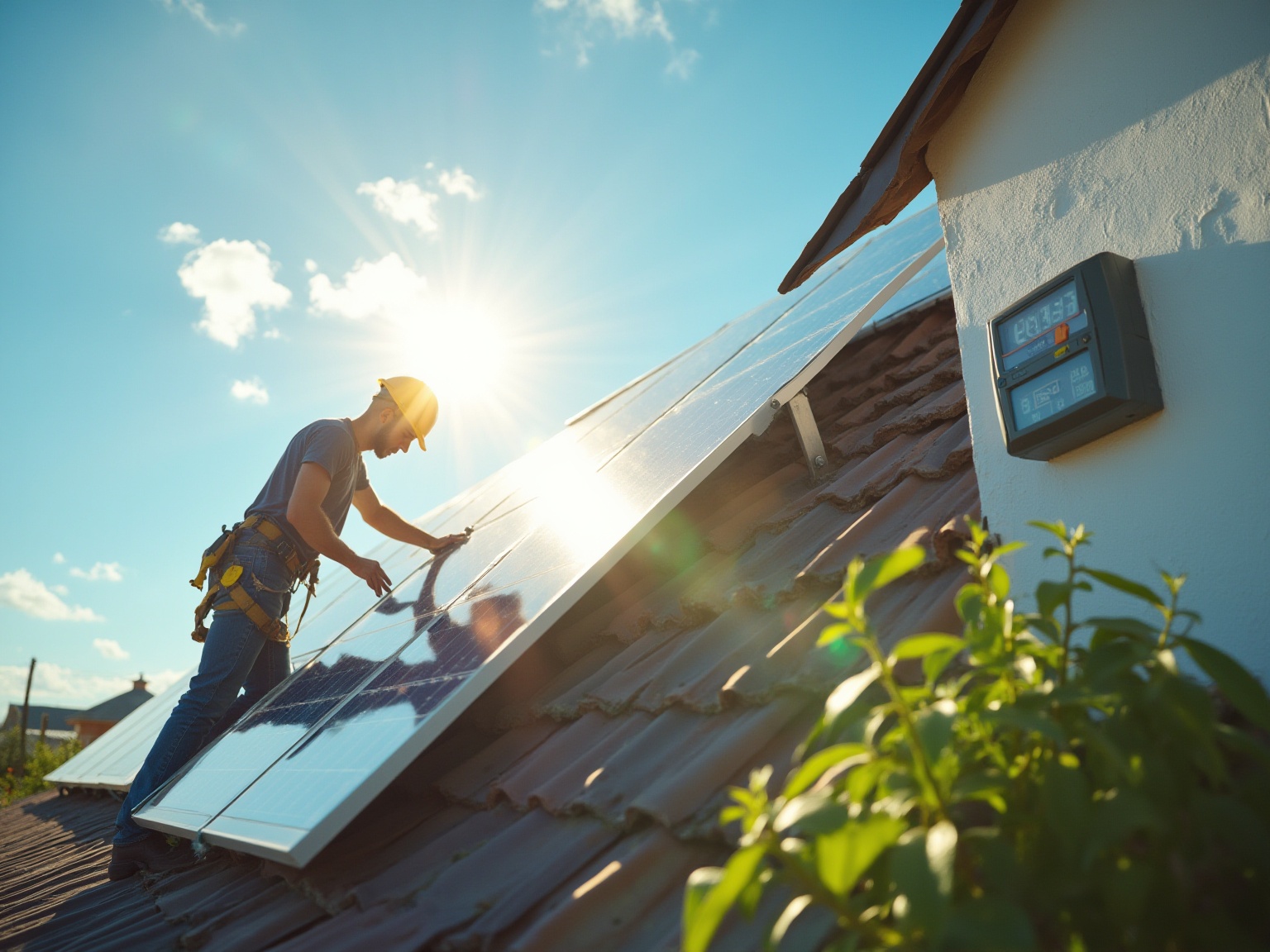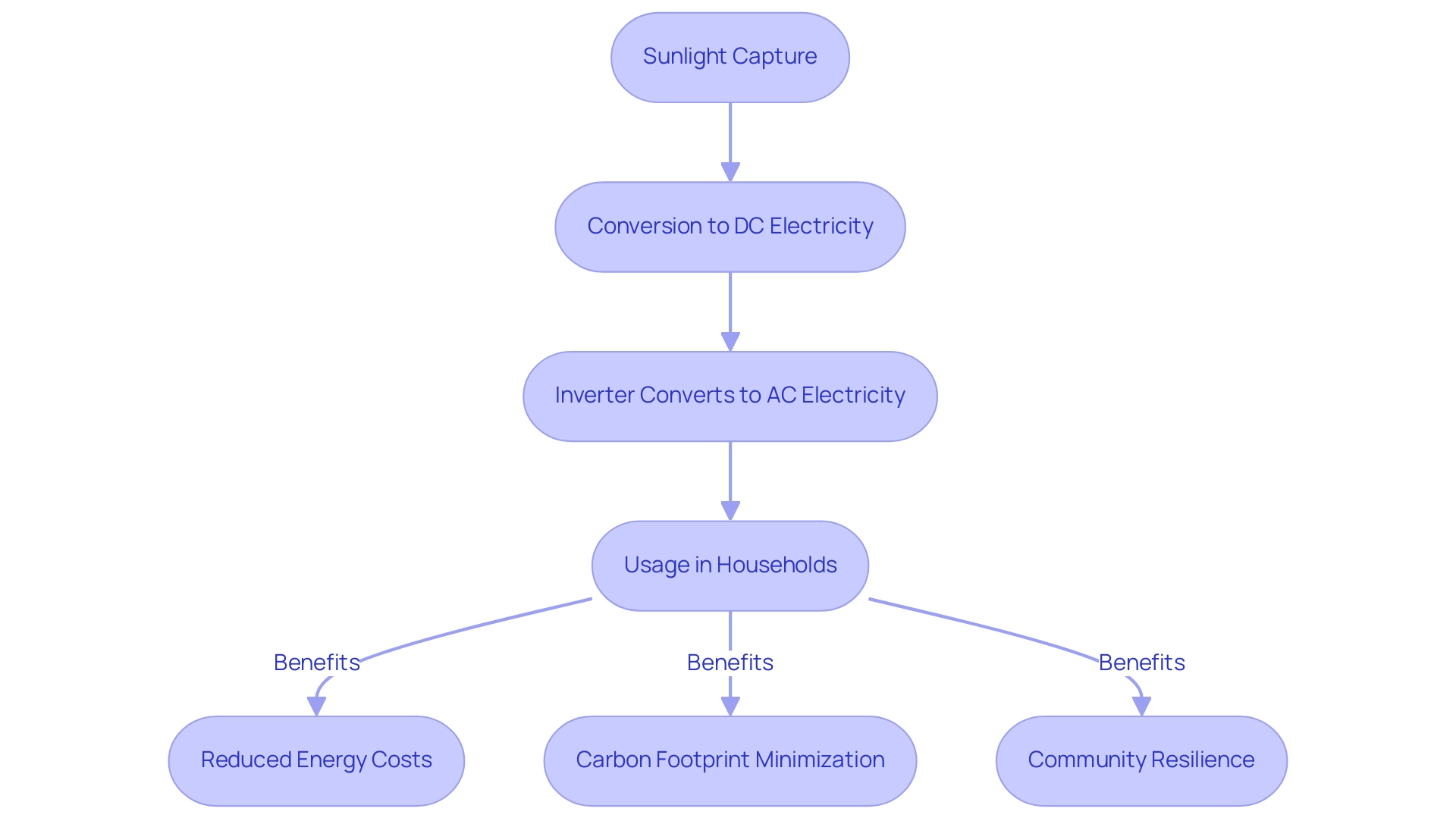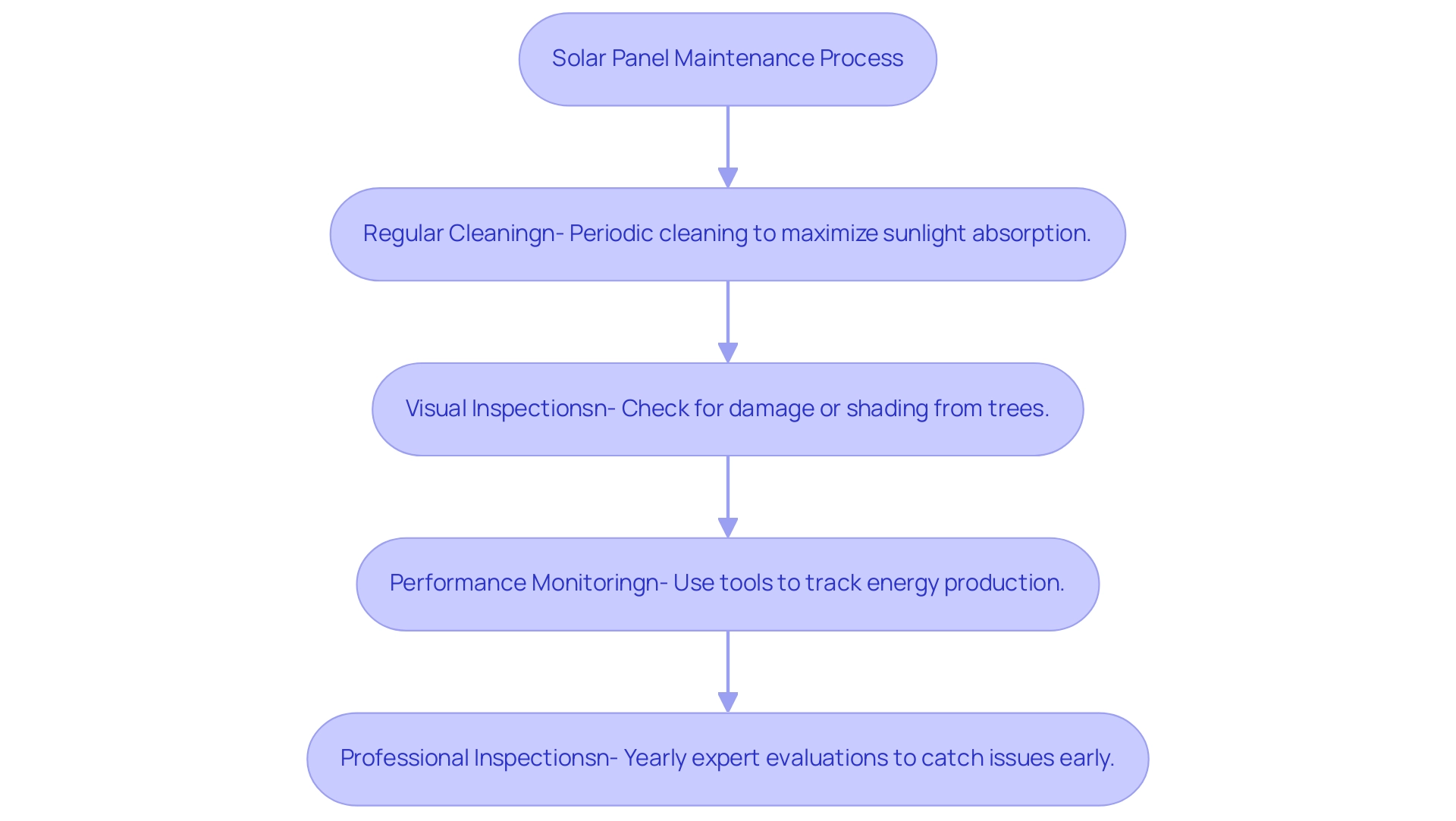Overview
We understand that rising energy bills can be a significant concern for many homeowners. Solar panel systems offer a promising solution by converting sunlight into electricity through the photovoltaic effect. This process energizes electrons in the panels, generating usable power that can help alleviate those financial worries. In this article, we delve into the details of how this works, highlighting essential components like inverters and battery storage.
Imagine the peace of mind that comes with energy independence—knowing that you are harnessing a renewable resource right from your rooftop. The benefits of adopting solar energy extend beyond just savings; they also contribute positively to our environment. By choosing solar, you are not only making a smart financial decision but also taking a step towards a more sustainable future.
Together, we can explore how solar energy can transform your home into a beacon of sustainability and savings. If you’re interested in learning more about how we can support you on this journey, please reach out. We are here to guide you every step of the way towards a brighter, greener future.
Introduction
As we navigate the rising costs of energy, it’s common to feel overwhelmed by monthly bills and the reliance on fossil fuels. However, as the world increasingly turns towards sustainable energy solutions, solar energy stands out as a beacon of hope for a cleaner, greener future. By harnessing the sun’s rays, solar panels not only provide a renewable source of electricity but also empower homeowners like you to reduce dependence on traditional energy sources. With significant advancements in technology and declining costs, the allure of solar energy has never been stronger.
Imagine the peace of mind that comes with understanding the mechanics behind photovoltaic systems and the financial benefits they offer. By exploring the myriad advantages of solar energy, you can take an important step towards energy independence. As you consider embracing this innovative technology, remember that this journey promises not only economic savings but also a vital contribution to a sustainable planet. Together, we can work towards a brighter, more sustainable future for all.
Understanding Solar Energy: The Foundation of Solar Panel Systems
Solar power harnesses the sun’s radiation to generate electricity or heat, representing a renewable and sustainable source that is increasingly appealing to homeowners who wish to reduce their dependence on fossil fuels. We understand that energy bills can be a significant concern, and it’s essential to explore solutions that not only alleviate these costs but also contribute to a healthier planet. Solar panels operate by transforming sunlight into usable power, offering a clean and efficient way to energize homes. This technology not only leads to substantial decreases in utility costs but also helps in minimizing your carbon footprint, making it an eco-friendly option.
Recent advancements in photovoltaic technology have made it even more feasible for home use. Did you know that the price of home photovoltaic panels has dropped by 40% over the last ten years? According to the Solar Energy Industries Association, this makes renewable power more accessible than ever. In California, nearly 29% of the state’s electricity was produced from sunlight in December 2024, reflecting a growing trend among property owners to embrace renewable technologies.
As of 2025, a significant percentage of California property owners have adopted photovoltaic systems, driven by the desire for power independence and sustainability. To understand how a solar panel system works, it’s important to know that photovoltaic panels capture sunlight and convert it into direct current (DC) electricity. This electricity is then transformed into alternating current (AC) electricity by an inverter for residential use. This efficient conversion process enables residents to harness sunlight effectively. When linked to the power grid, homeowners can access electricity even during times when their photovoltaic setup isn’t generating power. A case study on how solar panel systems function demonstrates that this technology empowers homeowners to utilize sunlight effectively, ensuring they maintain power even when the system isn’t actively generating electricity.
Moreover, the advantages of this alternative power source extend beyond individual households. Successful applications in residential neighborhoods have illustrated how renewable power can enhance community resilience and sustainability. For instance, New Mexico generated 417 MWh of sunlight-derived power in December 2024, representing 2.3% of the national renewable output, highlighting the broader impact of this adoption.
Furthermore, investing in thermal heating systems not only protects property owners from the fluctuations of energy expenses but also plays a crucial role in reducing greenhouse gas emissions, paving the way for a more sustainable future. Initiatives like the Biden-Harris administration’s $7 billion Solar for All program aim to enhance access to renewable power, ensuring that the benefits of photovoltaic technology are shared equitably among communities. As homeowners increasingly recognize these advantages, the trend toward photovoltaic adoption continues to grow, positioning this energy source as a cornerstone of modern energy solutions. Together, we can work towards a brighter, more sustainable future.
The Photovoltaic Effect: How Solar Panels Generate Electricity
To understand how a solar panel system works, it’s essential to consider the photovoltaic effect, the fundamental process that enables panels to convert sunlight into electricity. The journey begins when sunlight strikes the cells within a panel, energizing electrons and initiating the flow of electric current. This intricate process unfolds in two primary stages:
- First, photons from sunlight are absorbed by the semiconductor material in the photovoltaic cells, which excites the electrons.
- Second, these energized electrons are captured and directed through an electrical circuit, resulting in the generation of usable electricity.
Understanding how a solar panel system works is crucial for homeowners, as it sheds light on the efficiency and potential power output of the panels. As of 2025, the efficiency rates of monocrystalline panels range between 22% and 27%, with the current delivered efficiency standing at 22-27%, according to Aris Vourvoulias. These advancements in technology are making sunlight power not only more accessible but also more effective in meeting household power requirements.
Recent studies indicate that photovoltaic (PV) systems are projected to account for 4.5% of global electricity generation by 2050, underscoring their growing significance in the power landscape. Furthermore, the competitive nature of the renewable energy market, particularly with emerging players in countries like China and India, is driving down prices and enhancing the efficiency of panels and storage solutions. This trend is expected to encourage more households to adopt renewable energy solutions, especially with the support of government incentives aimed at promoting sustainable energy practices, such as various solar panel grants.
In addition to the direct benefits of solar panels, evaluating solar heater efficiency reveals significant cost savings for homeowners. Water heating solutions powered by the sun can save between $400 to $600 each year on utility costs, making them a financially sound investment. Moreover, these systems contribute to reducing greenhouse gas emissions, with the Environmental Protection Agency indicating that they can prevent 2 tons of carbon dioxide from entering the atmosphere each year. Practical examples illustrate how a solar panel system effectively produces electricity, with many homeowners noticing significant decreases in their utility expenses.
Additionally, photovoltaic technology plays a crucial role in reducing greenhouse gas emissions and mitigating climate change effects, making it a vital component of a cleaner, more sustainable future. As advancements in photovoltaic technology progress, including the incorporation of predictive analytics and artificial intelligence to enhance performance, the potential for sunlight-derived power to aid in creating a more sustainable environment becomes increasingly clear. Significantly, although merely around 370,000 thermal installations were functioning in the U.S. by the close of 2021, the rising usage of these technologies emphasizes their increasing acceptance and significance in sustainable power solutions.
Key Components of a Solar Panel System: What You Need to Know
A typical photovoltaic panel system consists of several essential elements that work together to capture sunlight efficiently. We understand that energy bills can be a concern for many homeowners, and these core components illustrate how a solar panel system operates effectively. For property owners in Stockton, California, it’s crucial to choose panels that perform well even on overcast days, as the local climate can significantly affect power production. Powercore Electric offers a variety of panels designed for optimal performance in different conditions.
In fact, in 2022, approximately 70% of homeowners in the U.S. were considering panel installation, reflecting a growing interest in renewable energy solutions. The inverter plays a vital role in this system, converting the direct current (DC) electricity produced by the panels into alternating current (AC) electricity, which is the standard used in homes. Choosing high-quality inverters is essential for maximizing the overall performance of energy systems, and Powercore Electric provides excellent options.
- Mounting System: This structure secures the panels to the roof or ground, ensuring stability and optimal positioning for sunlight exposure. Proper installation is key to optimizing power capture, and local companies in Stockton, including Powercore Electric, offer expert installation services tailored to your home.
- Battery Storage: While optional, battery systems can be incredibly beneficial as they store excess power generated during the day for use at night or during outages. Understanding the best solar battery options is crucial for residents looking to enhance their energy independence. Powercore Electric provides detailed specifications and comparisons of various battery options to help residents make informed choices. The trend of incorporating battery storage is gaining traction, especially as homeowners seek to improve their power consumption.
- Charge Controller: This device manages the voltage and current from the panels to prevent overcharging the batteries, ensuring the longevity and efficiency of the storage system.
Understanding how a solar panel system works is essential for homeowners to evaluate their options effectively. As of 2025, the average expenses of photovoltaic system components in California have decreased, with residential system pricing down 6% annually, making renewable power more accessible than ever. Furthermore, Tesla’s power and storage division achieved more than six billion U.S. dollars in revenue in 2023, highlighting the financial feasibility and market interest in renewable technologies.
The utility-scale renewable energy sector has also seen remarkable growth, with a record installation of 7.5 GW in Q2 2024, despite challenges such as labor shortages and equipment constraints. By becoming familiar with these key elements, property owners can make informed choices regarding their energy investments. For detailed installation instructions, homeowners can refer to the user manuals provided by Powercore Electric. Together, we can navigate the path to a more sustainable energy future.
Installing Solar Panels: A Step-by-Step Guide to the Process
The installation of solar panels is a structured process that typically unfolds in several key steps:
-
Site Assessment: We understand that considering solar energy can feel overwhelming. Initially, a qualified professional conducts a thorough evaluation of your property. This assessment focuses on factors such as sunlight exposure, roof condition, and shading from nearby structures.
A well-executed site assessment is crucial, as studies indicate that effective evaluations can lead to significantly better production outcomes.
-
Design and Permitting: Following the assessment, a customized system design is developed to optimize energy capture. This phase also involves securing the necessary permits from local authorities, which can be a barrier for many energy companies due to varying regulations.
Understanding these requirements early can streamline the installation process and prevent delays. It’s common to feel uncertain about these steps, but being informed can help. As noted in industry reports, the top barriers to success for companies in the renewable energy sector include permitting and interconnection rules, making it essential for homeowners to be aware of these challenges. Additionally, obtaining competitive bids can significantly impact costs; for instance, EnergySage has saved users a ton of money by helping them get bids that were half the cost of those they received by calling around.
-
Installation: The installation team then proceeds to mount the solar panels on your roof or property. This step involves linking the inverter and creating the electrical connections required for the setup to operate. Powercore Electric’s in-house experts ensure that installations are performed to the highest standards, minimizing the risk of future issues.
It’s also important to consider the integration of efficient battery storage solutions during this phase, as they play a critical role in maximizing energy use and ensuring that homeowners can store excess energy for later use.
-
Inspection: After installation, a final inspection is conducted to verify that all components meet safety and code requirements. This step is essential for ensuring that the network operates efficiently and safely, providing peace of mind to homeowners.
-
Activation: Once the system passes inspection, it is activated, allowing you to start generating your own electricity. This shift to renewable resources not only aids in environmental sustainability but also provides possible savings on utility expenses.
Understanding how a solar panel system works enables homeowners to make informed choices regarding their renewable investments. With the appropriate preparation and understanding, the journey to utilizing sunlight can be a seamless and fulfilling experience. Furthermore, we recognize that the current landscape of the industry related to renewable energy is marked by uncertainty due to potential funding pauses and tariffs affecting imports, which may influence your installation experience in 2025. Together, we can navigate these challenges and work towards a brighter, more sustainable future.
Financial Benefits of Solar Energy: Understanding Net Metering and Savings
As a homeowner, it’s common to feel overwhelmed by rising electricity expenses, especially in regions like California. Investing in renewable energy can provide substantial financial relief. By generating your own power, you can significantly reduce your electricity bills. For instance, a typical 5 kW residential photovoltaic system can save you between $100 to $150 each month, depending on factors such as array size and local electricity rates.
Looking ahead to 2025, residents in high electricity cost areas can anticipate even greater savings—between $100 to $200 or more each month—by making the switch to solar.
Moreover, many states, including California, have implemented net metering programs. These initiatives allow property owners to earn credits for any surplus electricity produced by their photovoltaic panels that is sent back into the grid. This means that on sunny days, when your system generates more power than you use, you can offset your electricity expenses during less sunny periods.
Understanding how a solar panel system works is crucial for fully appreciating the financial benefits of photovoltaic energy. Success stories abound in California, where residents have reaped the rewards of net metering. Households that have invested in photovoltaic systems not only report decreased energy costs but also increased home value—studies from Lawrence Berkeley National Laboratory suggest that such installations can enhance property values by approximately $15,000 on average. This combination of savings and increased home equity underscores the financial viability of renewable energy.
As you contemplate the transition to sustainable power, it’s essential to recognize the long-term financial benefits. Over the lifespan of a solar system, typically lasting 25 to 30 years, savings can accumulate to tens of thousands of dollars. With the support of skilled providers like Powercore Electric, who ensure high-quality installations and maintenance, you can navigate the complexities of photovoltaic systems and net metering while learning how to maximize your investment in renewable resources.
Powercore Electric offers tailored solutions, including consultations on sizing and financing options, to help you enhance your renewable energy systems. Additionally, understanding the implications of the 200% rule can further amplify the benefits of renewable energy, enabling you to optimize your setup for maximum efficiency and savings. Together, we can work towards a brighter, more sustainable future.
Maintaining Your Solar Panel System: Tips for Optimal Performance
To maintain your solar panel system and ensure optimal performance, we understand that you may have concerns about energy bills and the efficiency of your investment. Consider implementing the following nurturing strategies:
- Regular Cleaning: Ensuring your panels are clean is crucial for maintaining their efficiency and boosting energy production. Accumulation of dust, leaves, and debris can significantly hinder the efficiency of solar panels. It’s common to feel overwhelmed, but it is advisable to clean them periodically, particularly after storms or heavy winds, to maximize sunlight absorption. Research indicates that even slight performance declines can accumulate over time, with a median loss rate of 0.75% per year for photovoltaic systems. Regular cleaning can help mitigate these losses, ensuring your investment continues to yield cost-effective power by enhancing your understanding of how a solar panel system works.
- Visual Inspections: We encourage you to conduct routine visual checks for any signs of damage or shading caused by nearby trees. Tree upkeep is essential; even slight shading can decrease power production. Homeowners may need to invest in tree trimming to improve sunlight efficiency, as managing surrounding vegetation can lead to better savings. A case study titled ‘Tree Maintenance for Solar Efficiency’ demonstrates that by managing surrounding vegetation, homeowners can enhance the effectiveness of their power setups, resulting in improved savings and performance.
- Performance Monitoring: Utilize photovoltaic monitoring tools to track how your solar panel system works in terms of energy production. These tools can help identify performance declines, allowing for timely interventions. Recent insights suggest that installing a monitoring solution can significantly help in identifying performance issues. Statistics indicate that regular monitoring can lead to improved efficiency and longevity, making it an essential part of your maintenance routine.
- Professional Inspections: We recommend arranging yearly expert evaluations to guarantee all parts of your energy setup are operating properly. Experts suggest this practice to catch potential issues early, which can prevent costly repairs down the line. As noted by an expert, “Did you notice a significant drop in energy production? This issue can be due to a variety of factors, with the most common being dust and debris buildup. However, it can also be caused by malfunctioning components.” As stated by Ben Zientara, an author and energy policy analyst, 38% of all renewable energy firms anticipate growth in 2025, emphasizing the significance of preserving installations to stay current with industry progress. Additionally, researchers from the Indian Institute of Engineering Science and Technology have developed a model to estimate dust accumulation on photovoltaic panels, which is crucial for optimizing maintenance.
By following these maintenance tips, together we can greatly improve your understanding of how a solar panel system works, enhancing the efficiency and lifespan of your energy installations to ensure they remain functional for years ahead. Regular maintenance not only protects your investment but also aids in a sustainable future. Additionally, it’s worth noting that most panel companies offer at least 25 years of product warranty protection, underscoring the long-term reliability of these systems.
The Environmental Impact of Solar Energy: A Sustainable Choice for Homeowners
Solar power stands out as one of the cleanest and most sustainable sources available today. By harnessing sunlight, photovoltaic panels generate electricity without emitting greenhouse gases or pollutants, illustrating how a solar panel system works to significantly reduce a household’s carbon footprint. We understand that energy bills can be a concern for many homeowners, and those who transition to renewable power can anticipate a decrease in their carbon footprint by as much as 80% by 2025. This highlights the significant effect of this sustainable resource on environmental well-being.
The acceptance of sunlight power not only aids in cleaner air but also promotes a healthier environment overall. As California leads the nation in photovoltaic installations, with projections of maintaining an annual capacity of 40-45 GW over the next five years, the state’s dedication to sustainable power is evident. This transition is additionally backed by measures such as the Inflation Reduction Act, which encourages property owners to invest in renewable energy technology.
At Powercore Electric, our internal group of specialists guarantees top-notch installations and upkeep, offering homeowners dependable solutions that improve their independence in power. It’s common to feel uncertain about making such a significant change, but understanding how a solar panel system works is vital in reducing dependence on fossil fuels, thus encouraging autonomy and sustainability.
Successful solar power initiatives throughout California have shown notable decreases in carbon footprints. For instance, a home in Southern California realized over 70% savings on expenses after installing a solar water heating system. Additionally, passive power collection designs, such as large south-facing windows, have proven effective in cooler regions, significantly reducing costs during winter months.
Sunlight-powered air heaters can also decrease a household’s carbon output by 20 to 40 percent and lower monthly energy expenses by 30 percent, according to Clean Energy Resource Teams. These case studies reinforce the notion that shifting to renewable energy is not just an eco-friendly choice but a necessary step towards a sustainable future.
In addition to environmental benefits, customer satisfaction with Powercore Electric highlights our commitment to service excellence. Clients have praised the efficiency and professionalism of our team, with one customer stating, “Ryan and his team were great. They were quick, effective, and remained on schedule for our installation.” This reflects Powercore Electric’s dedication to quality craftsmanship and community engagement.
As the ecological effects of sunlight harnessing continue to gain attention, adopting this technology aligns perfectly with the values of eco-conscious homeowners. Together, we can make a positive difference in our communities and the planet.
The Future of Solar Technology: Innovations and Trends to Watch
We understand that concerns about energy bills can weigh heavily on your mind. The future of photovoltaic technology is exceptionally promising, marked by a wave of innovations that are set to transform the power landscape. One of the most significant trends is the emergence of highly efficient panels, including bifacial models that harness sunlight from both sides, thereby maximizing power capture. This progression is enhanced by advancements in power storage solutions, with a significant change in homeowner preferences; in 2024, 80% of homeowners chose battery storage mainly for backup power, emphasizing the increasing significance of reliability in power systems.
It’s common to feel uncertain about power management, but the incorporation of intelligent technology into photovoltaic installations is set to transform this experience. These frameworks will not only improve monitoring abilities but also optimize power consumption, resulting in significant reductions on utility bills. As the renewable energy sector continues to evolve, expert predictions indicate a robust growth trajectory, with 78% of installers anticipating increased sales in 2025.
This optimism is further supported by the substantial growth in photovoltaic installations, which surpassed 30 GW through Q3 2024, driven by favorable policies such as the Inflation Reduction Act that incentivizes photovoltaic deployment.
In addition to these advancements, ongoing research and development are focused on improving panel efficiency and expanding the capabilities of storage systems. Homeowners are increasingly evaluating the best battery choices for efficient power storage, with key factors such as capacity, efficiency, lifespan, price, and ecological benefits coming into play. Together, these advancements are anticipated to offer property owners improved power autonomy and sustainability advantages, making investments in renewable technology more appealing than ever.
As Ben Zientara, a renewable energy policy analyst, notes, 38% of all companies in this sector expect to grow in 2025, with an additional 35% anticipating to maintain their current business levels. As the landscape of solar technology continues to evolve, we can look forward to a future where energy savings and environmental stewardship go hand in hand. Let’s work towards this brighter future together.
Conclusion
Exploring solar energy presents a remarkable opportunity for homeowners who wish to lessen their dependence on fossil fuels while enjoying both economic and environmental advantages. By tapping into the sun’s power through photovoltaic systems, you can significantly lower your energy bills and contribute to a cleaner, more sustainable planet. With ongoing advancements in solar technology, the efficiency and affordability of solar panels are making them an increasingly appealing choice for individuals and communities alike.
We understand that navigating the components of solar panel systems, the installation process, and financial incentives like net metering can feel overwhelming. However, this knowledge empowers you to make informed decisions. The potential for substantial savings, combined with the positive environmental impact—such as reducing carbon footprints by up to 80%—reinforces the importance of transitioning to solar energy. Our commitment to innovation in solar technology promises a future where energy independence is not just a dream, but a reachable reality for sustainable living.
As the solar industry continues to evolve, embracing solar energy is a crucial step towards a brighter and more sustainable future. By investing in solar, you not only enhance your economic stability but also play a vital role in combating climate change. Together, we can contribute to a collective movement towards a cleaner world, ensuring that the benefits of renewable energy are experienced for generations to come. The time to act is now; your journey towards energy independence and environmental stewardship can begin with solar energy.
